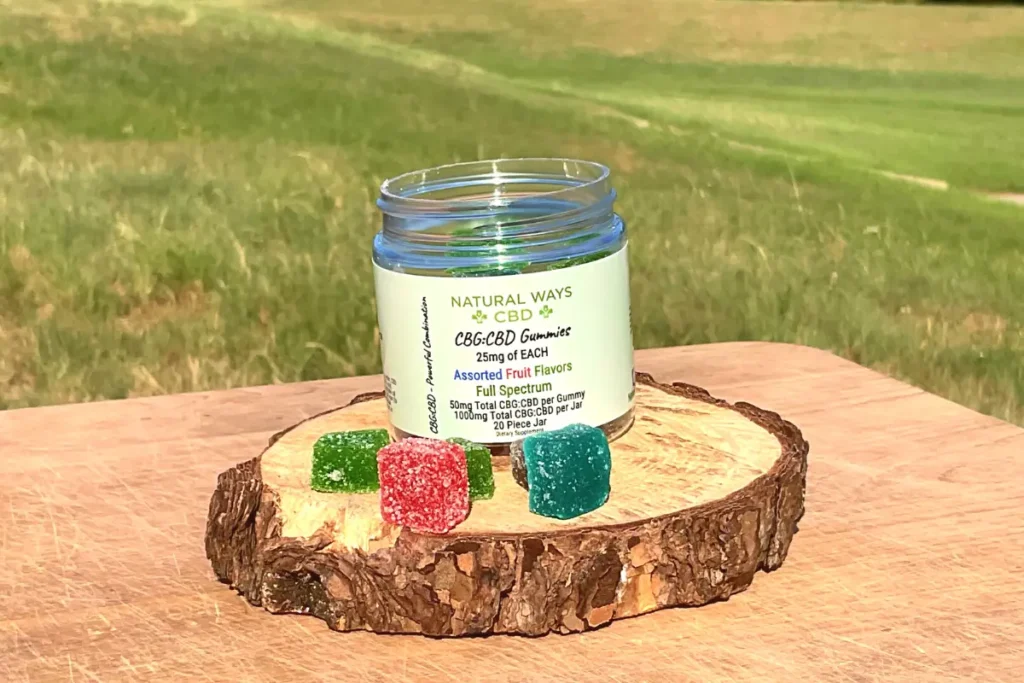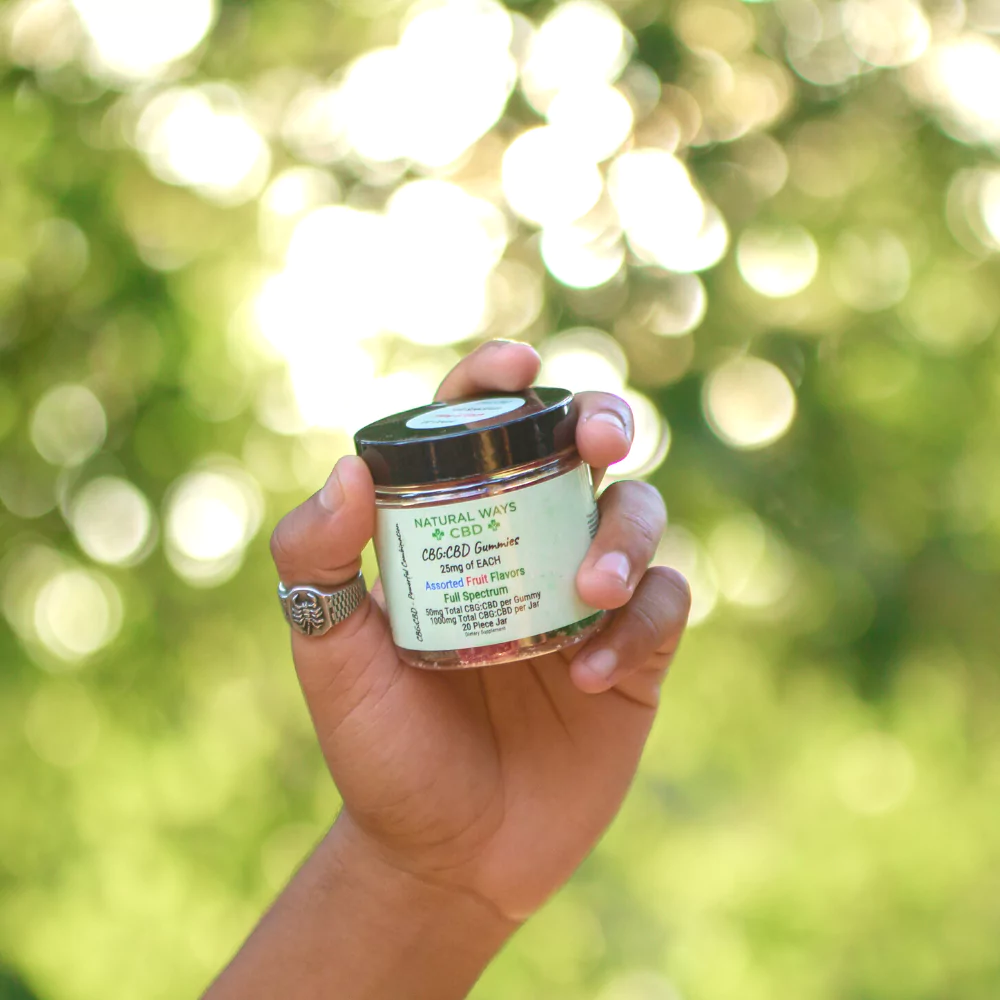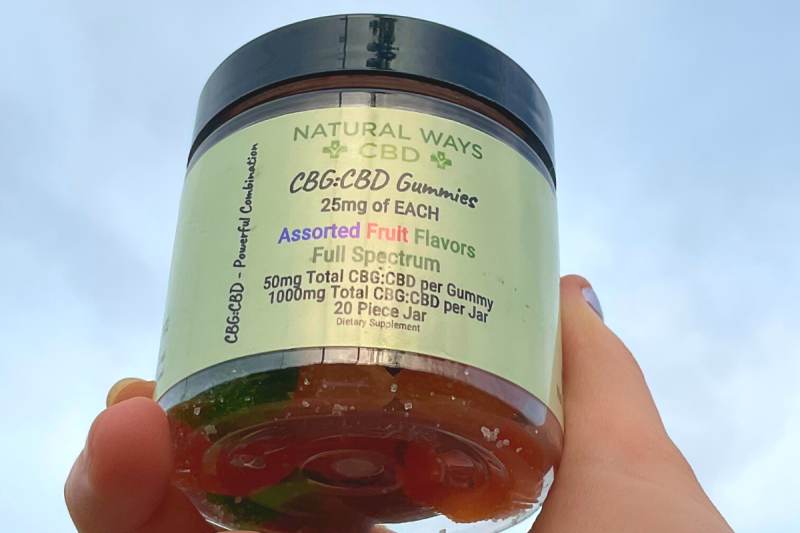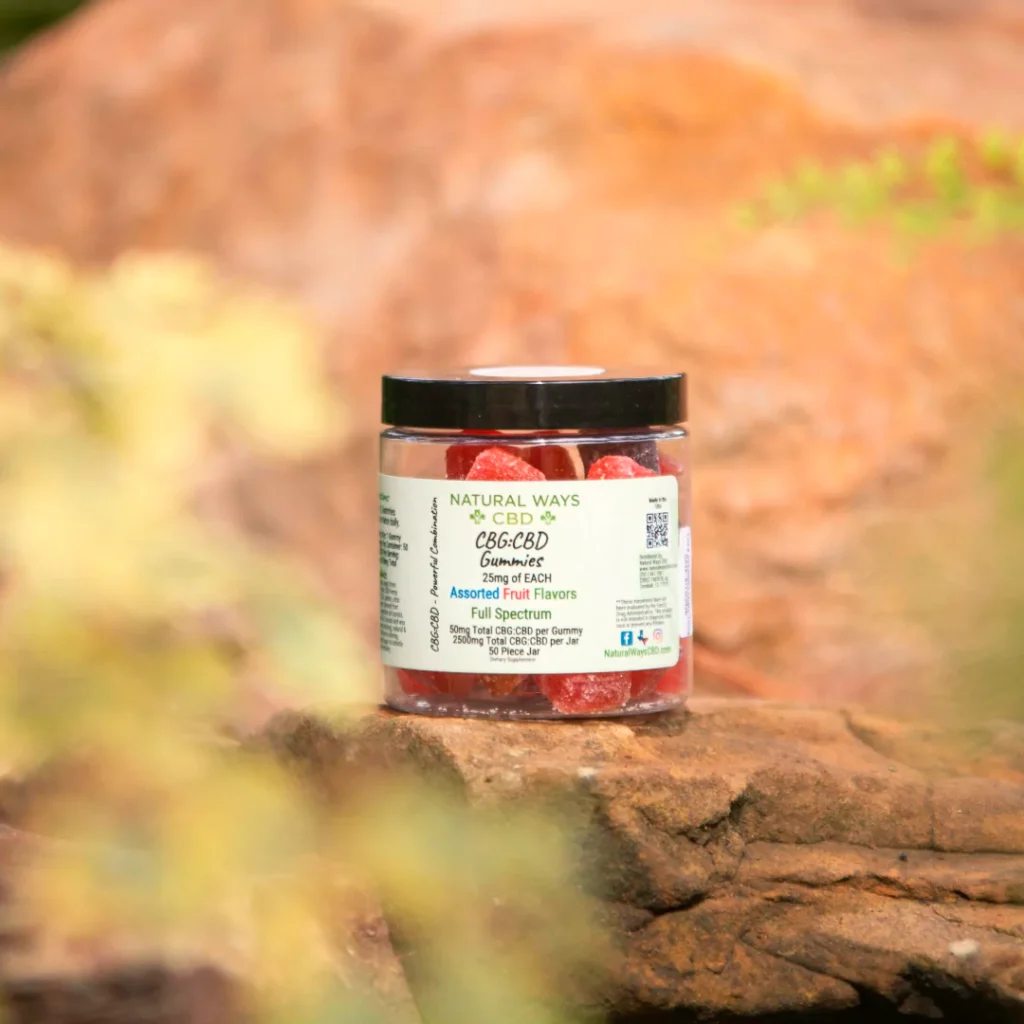If you’re dealing with nerve pain as a result of neuropathy, sciatica, fibromyalgia, or other conditions, you’ve probably tried just about everything to reduce the discomfort.
Hemp-derived CBG (cannabigerol) is one natural alternative you may be exploring. CBG is a cannabinoid known for its potential anti-inflammatory and analgesic (pain-relieving) effects. But do these beneficial effects also apply to nerve pain?
The answer is yes, probably; but there’s much more to know. That’s what this article will explore. We’ll also discuss how CBG works and how to use it.
What is CBG?
Cannabigerol (CBG) is a naturally occurring cannabinoid in the hemp/cannabis plant (hemp is cannabis with less than 0.3% THC). It’s only naturally found in very small amounts, even though it’s the cannabinoid from which all others come (earning it the nickname “the mother of all cannabinoids”).
But CBG has benefits you could only describe as large. Research and anecdotal evidence suggest it may help with inflammation, pain, and anxiety, and that it may be more effective than CBD for some uses.
What Research Says About CBG for Nerve Pain
CBG has been studied a bit as a nerve pain reliever.
One study investigated how CBG affects pain response in mice with peripheral neuropathy. This research was conducted to better understand how CBG might affect humans with this condition.
The researchers found that CBG reduced pain responses that came from neuropathy, but more interestingly, they found that a 1:1 combination of CBG and CBD (cannabidiol) was more effective than CBG alone for this purpose. Nevertheless, this study shows the therapeutic potential of CBG for neuropathy.
Another study looked at CBG’s effects on arthritis and neve pain responses in mice. Researchers in this case also found that CBG relieved both types of pain by reducing pain signaling.
Overall, the limited research that’s been done on CBG for nerve pain is promising.
So is the anecdotal evidence: many people who use CBG find that it helps with their nerve pain, and they even say it’s more effective than gabapentin, a popular nerve pain medication, for this purpose.
However, more clinical research is still needed on CBG to determine how reliable of a treatment it is for nerve pain.
How CBG Works for Nerve Pain
CBG, like many cannabinoids, works primarily through your body’s endocannabinoid system (ECS), a receptor system that regulates all of your vital functions, including your inflammatory and pain responses. Your ECS works to keep your body in a state of balance; outside cannabinoids such as CBG help it perform its job.
There are two main types of receptors in your ECS:
- CB1 receptors – responsible for regulating mental sensations
- CB2 receptors – responsible for regulating physical sensations
CBG binds to both types of receptors, thereby promoting mental and physical relaxation and rendering therapeutic benefits.
Some researchers suggest that CBG is the step between CBD and delta 9 THC in terms of how it interacts with your body; using CBG will create noticeably energizing and uplifting effects, but it won’t get you high.
CBG works by other mechanisms, too. It may impact your body’s levels of the neurotransmitter GABA. Higher GABA levels are associated with normal states of mental and physical health; decreased levels play a part in creating pain states.
Researchers have found a direct link between decreased GABA levels and neuropathic pain.
CBG may inhibit the reuptake of GABA by the synapses in your brain, thereby increasing the levels of this neurotransmitter. Scientists hypothesize that this is how CBG is able to render therapeutic benefits for those with physical discomfort.
CBG vs. Gabapentin for Nerve Pain: A Natural Replacement?
Research suggests CBG may have many of the same benefits as gabapentin for nerve pain. Many people have successfully replaced their gabapentin with CBG, and discovered that it works as good or better.
Others have found that they still need gabapentin, but are able to reduce their dose because they introduced CBG into their regimen.
Since CBG works similarly to gabapentin (which, hence its name, also inhibits the reuptake of the neurotransmitter GABA), these benefits aren’t too surprising.
However, we don’t recommend replacing or supplementing your gabapentin with CBG before speaking to your doctor. They’ll be able to help you determine how much CBG you should be taking, and if it’s the right choice for you to begin with.
Should You Combine CBG with Other Cannabinoids for Nerve Pain?
As we discussed in the research section, one study suggests that CBG is more effective for neuropathic pain when combined with CBD. Many people also report that CBG works better when used alongside THC.
We’ll get into the benefits of these different combinations, but first, it’s worth understanding how they work.
When you use cannabinoids together (such as taking CBG with THC and CBD), you experience the entourage effect: elevated benefits and effects from using the hemp plant in formulations that more closely resemble its natural form.
Hemp naturally contains many cannabinoids together (the “entourage); when you take them all together, or you use even two of them together, they render more benefits than if you use them in their isolated forms.
CBG & CBD for Nerve Pain
Research and anecdotal evidence suggest that using CBG along with CBD renders more physical relaxation than using CBG by itself; CBD works differently for nerve pain, so it makes sense that it can do things CBG can’t (and vice versa).
CBG & THC for Nerve Pain
CBG and THC have very different effects, but using them together may render more benefits than using them in isolation.
Combining CBG with THC for nerve pain allows you to get a head high while also getting the physical benefits; it creates an all-around euphoric experience that can make discomfort seem more distant than otherwise.
How to Use CBG for Nerve Pain: Dosage & Products
If you’ve decided that CBG is the right option for your nerve pain, here’s what to know about dosage and products.
Dosage
For nerve pain, you’ll want to start with a medium-strength dosage of CBG. You can calculate it using the following formula:
(0.3) x (your body weight in lbs.) = your daily CBG dosage in mg.
If you’re using CBG along with other cannabinoids, make sure your total cannabinoid intake matches what you calculated with the above formula – to start. So if your dosage is 20mg, you might decide to take 10mg of CBG and 10mg of CBD.
After you’ve used your dose a few times, slowly adjust it depending on how it’s working for you. You might find that you only need a small dose of CBG (10mg), or you might find that a larger dose has a better impact on your nerve pain.
How to Take CBG
- CBG Oil – CBG oil consists of hemp extract and carrier oil. Oils are taken under the tongue and absorbed into the blood vessels in the mouth, rather than swallowed. This allows for a quick onset; CBG oil begins working in just 10-15 minutes. One of the main upsides of CBG oil is that it can be dosed very precisely.
- CBG Edibles – CBG edibles, such as gummies, offer a fixed-dose consumption method, so they’re great if you need to take the same amount of CBG consistently. However, since they have to be digested, gummies won’t begin rendering effects for 45 minutes to 1 hour.
- CBG Capsules – CBG capsules are a quick, tasteless way to get your daily dose (they’re similar to over-the-counter ibuprofen). Capsules will begin working in 45 minutes to 1 hour.
- CBG Inhalables – There are a variety of CBG flower and vape products available online and at CBD stores and dispensaries. Although inhaling CBG comes with the obvious health downside, flowers and vapes begin working in just 5-10 minutes, as they deliver CBG directly to your lungs.
Conclusion: A Natural Nerve Pain Supplement?
Research and anecdotal evidence suggest that CBG may help you supplement nerve pain medications, in in some cases, even replace them altogether. With CBG, you’ll have a natural way to combat the shooting, radiating discomfort that makes basic tasks unbearable.
Just be sure to speak with your doctor about using CBG before you start – they’ll be able to help you use it in the way that’s best for you.
Looking for a stronger option? Learn more about using delta 8 for nerve pain.
CBG for Nerve Pain: Frequently Asked Questions
Here are some questions we commonly get asked by customers about CBG for nerve pain.
Does CBG help with nerve pain?
Research and anecdotal evidence suggest that CBG may have therapeutic potential to relieve nerve pain, although clinical studies are needed. CBG renders beneficial physical and mental effects by interacting with your endocannabinoid system and GABA neurotransmitters.
Which cannabinoid is best for nerve pain?
CBD, CBG, and THC all have potential benefits for nerve pain, however, CBG, in particular, is of interest to scientists because it acts as an inhibitor of the neurotransmitter GABA, just as nerve pain medications like gabapentin do.
Is CBG good for sciatica?
Although research on CBG (cannabigerol) for sciatica is limited, anecdotal evidence suggests CBG may have therapeutic benefits for sciatic pain. CBG has been shown by research to render pain-relieving effects against neuropathic pain.
What is the best type of CBG gummies for nerve pain?
The best CBG gummies for nerve pain will typically have a 1:1 blend of CBG and CBD. These cannabinoids render stronger physical support when used together.








